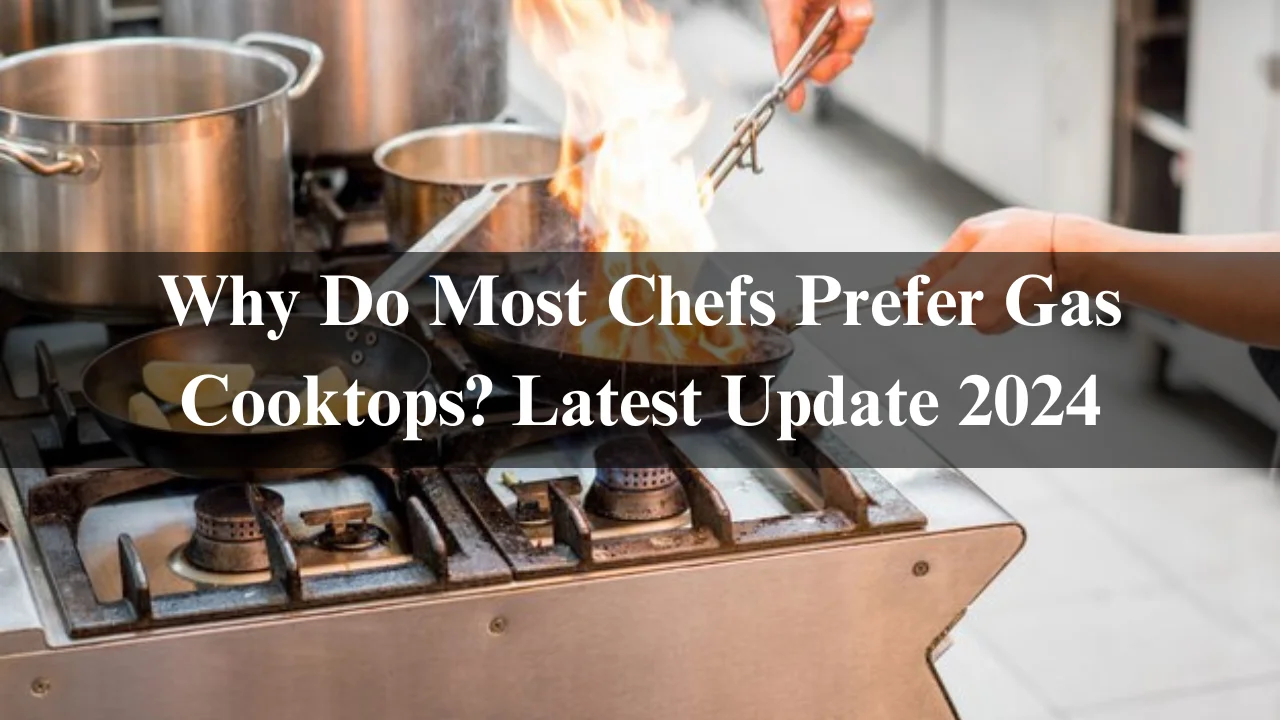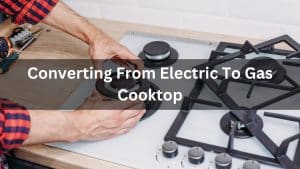If you’ve ever watched a master chef whip up culinary magic on your favorite cooking show, you might have noticed a common theme: gas cooktops. But what is it about these fiery appliances that keeps professional chefs coming back for more? Is it the precision, the instant heat, or perhaps an age-old tradition steeped in flavor and technique?
In this blog post, we’ll dive into the sizzling world of gas cooktops and uncover why they are often hailed as the gold standard in kitchens around the globe. From their unparalleled responsiveness to their ability to elevate every dish with finesse, discover how cooking with gas ignites passion and creativity in every culinary endeavor!
Table of Contents
Why Do Most Chefs Prefer Gas Cooktops?
Gas cooktops have been a staple in professional kitchens for many years, and for good reason. Most chefs prefer gas cooktops over other types of stoves or ranges. But what makes gas cooktops the top choice for culinary experts? Let’s explore the various reasons why most chefs prefer gas cooktops.
Instant Heat Control
One of the main reasons why chefs prefer gas cooktops is the instant heat control they offer. Unlike electric stoves that take time to heat up and cool down, gas burners provide immediate heat when turned on and can be easily adjusted with precision. This allows chefs to have more control over their cooking process, making it easier to achieve precise temperatures for different types of dishes.
Even Heat Distribution
Gas burners are also known for their even heat distribution, which is crucial in cooking delicate dishes such as sauces or soups. With a consistent flame and no hot spots, chefs can ensure that every part of their dish is cooked evenly, avoiding any burns or undercooked areas.
Better Visibility
Another advantage of using a gas cooktop is the visibility it offers while cooking. Unlike electric stoves with opaque coils that block your view, gas burners provide a clear line of sight to your pots and pans. This allows chefs to closely monitor their food as it cooks and make necessary adjustments if needed.
Versatility
Gas cooktops are incredibly versatile when it comes to cooking methods. From low simmering to high-heat searing, these burners allow chefs to use different techniques without switching appliances or constantly adjusting settings. This flexibility makes them ideal for preparing a wide range of dishes.
Optimum Flame Size Options
Most modern-day gas cooktops come equipped with multiple burner sizes ranging from small simmer flames to large high-heat flames. Having this variety of flame sizes allows chefs to choose the appropriate one for the size and type of cookware they are using. This again highlights the level of control gas cooktops offer to chefs, making it easier for them to achieve their desired results.
Better Visual Cues
The open flame on a gas cooktop provides visual cues that can help chefs monitor and adjust their cooking process more accurately. For example, they can easily see if a pot is boiling rapidly or just lightly simmering by observing how high the flames are burning under it. This helps prevent overcooking or undercooking food and ultimately leads to better-tasting dishes.
Cost-Effective
Compared to electric stoves, gas cooktops are often more cost-effective in terms of both upfront installation costs and ongoing energy costs. Gas is generally cheaper than electricity, and the efficiency of gas cooktops means that less energy is wasted during cooking. This can result in significant savings for restaurants and professional kitchens with high cooking demands.
After read this you are also cover the answer of our next outline of What Are the Key Benefits of Gas Cooktops for Chefs? So we cant explained it again.
Most chefs prefer gas cooktops due to their instant heat control, even heat distribution, better visibility, versatility, and optimum flame size options. These features not only make cooking more efficient but also allow chefs to unleash their creativity in the kitchen. If you want to up your cooking game at home, consider investing in a gas cooktop for a professional touch to your dishes.
Precision Control in Cooking
Precision control in cooking is a crucial factor that can greatly impact the success of a dish. It refers to the ability to regulate the heat level and distribution while cooking, allowing for precise and consistent results. This is where gas cooktops truly shine, making them a top choice among chefs.
One of the main reasons why chefs prefer gas cooktops over electric or induction ones is the immediate response time they offer. With gas cooktops, the flame can be easily adjusted from low to high heat instantly, whereas electric cooktops have a delay in adjusting temperature due to heating up or cooling down their coils. This quick and precise response allows for better control over delicate dishes that require constant attention and adjustment of heat levels.
How gas offers chefs control for sensitive dishes?
Gas cooktops are offer the level of control when cooking sensitive dishes. Sensitive dishes refer to those that require precise temperature and cooking time to achieve the desired outcome. These can include delicate sauces, soufflés, custards, and other dishes that can easily be ruined if not cooked with precision.
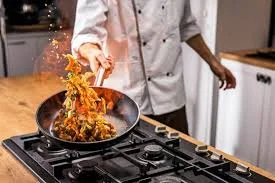
One of the main advantages of using gas cooktops for sensitive dishes is the instant heat they provide. Moreover, gas cooktops also offer a wide range of heat settings that allow chefs to fine-tune the temperature according to their needs. The flame size can be adjusted from low to high with just a turn of a knob, giving chefs greater control over their cooking process. This is especially important for delicate sauces that require low heat and constant stirring.
How to Quickly shifting from high heat to a low simmer with ease?
To quickly shift from high heat to a low simmer on a gas cooktop, it is important to first understand how the heat control works. The heat intensity on a gas cooktop is controlled by turning the burner knob, which adjusts the flow of gas through the burner valve. The higher the flame, the more gas flows through and thus, greater heat is produced.
To start with, it is recommended to preheat your cookware on medium-high or high heat before reducing it to a low simmer. This ensures that your pan reaches an even temperature and prevents any hot spots that can cause uneven cooking.
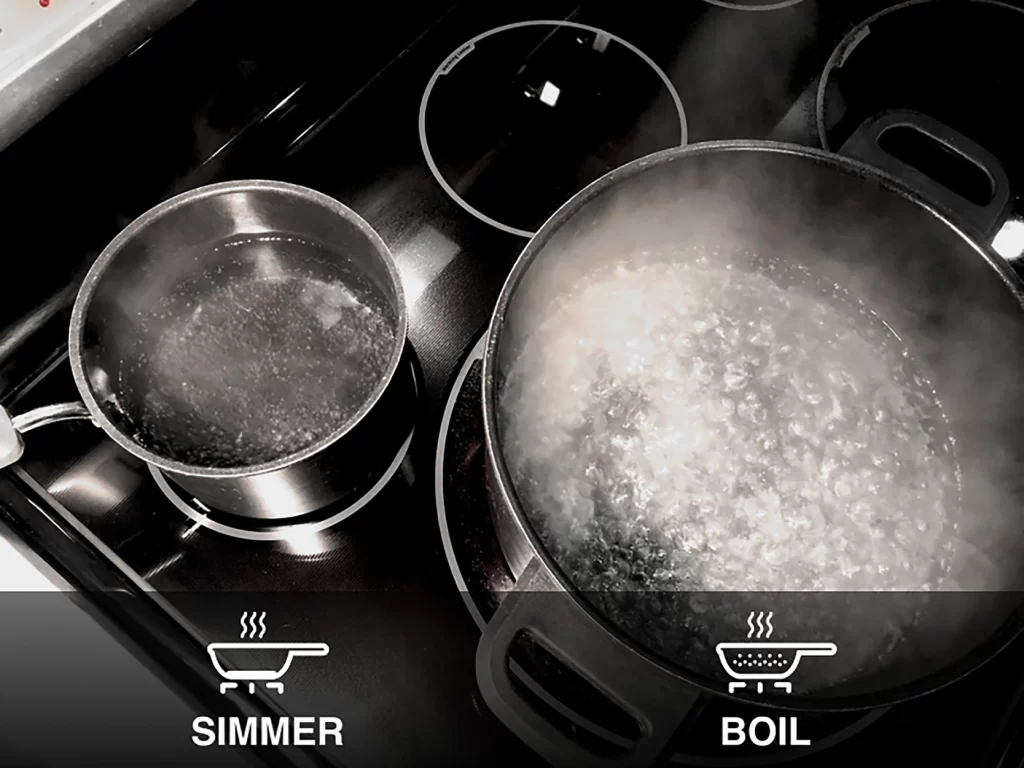
When you are ready to lower the heat, slowly turn down the burner knob until you see only tiny flickers of blue flames underneath your pot or pan. It may take some practice and adjustments before you achieve the desired low simmer level, but with time, you can easily gauge the perfect setting for each dish.
How gas cooktops enhance the flavor of dishes?
One of the main reason to choose the gas cooktop is for this because gas cooktops provide an unmatched level of control over heat, which is crucial when it comes to cooking and enhancing flavors.
The first thing that sets gas cooktops apart from their electric counterparts is the ability to adjust the flame size instantly. This gives chefs precise control over the amount of heat being applied to their dishes, which is essential when dealing with delicate ingredients or recipes requiring specific temperature adjustments. With electric cooktops, there is often a lag time between adjusting the temperature and seeing results, making it challenging to achieve consistent results.
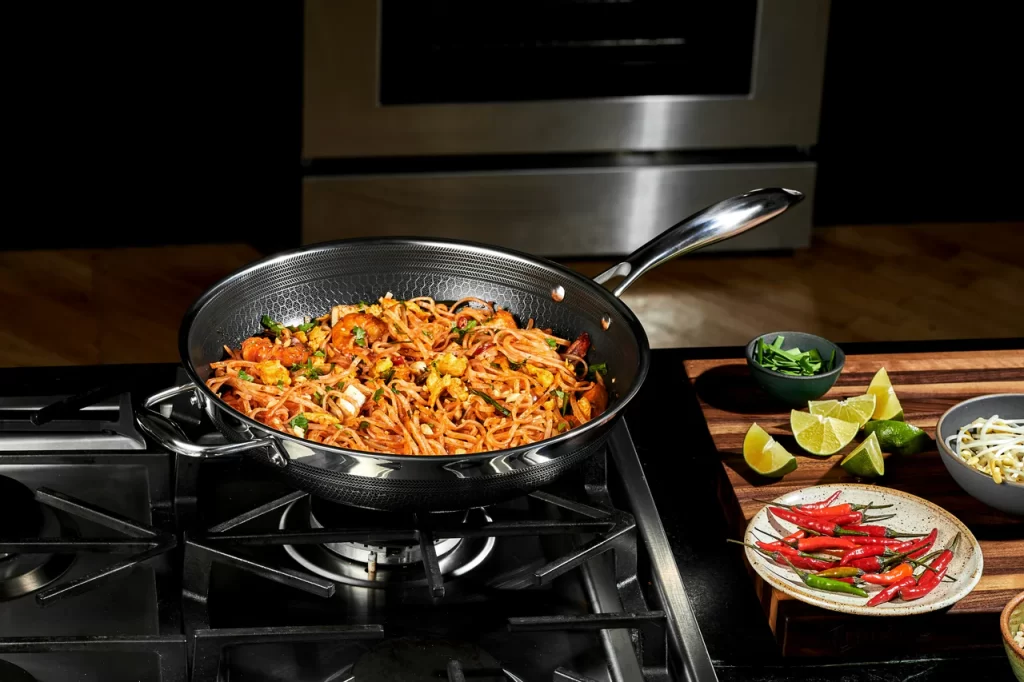
How Gas Cooktops Enhance the Cooking Process?
Gas cooktops can maintain the cooking process and maintain a consistent flame. This may seem like a small detail, but it plays a crucial role in producing delicious and perfectly cooked dishes.
Gas cooktops provide a more precise and immediate response when adjusting the heat level, making it easier for chefs to control the temperature while cooking. This is due to the direct flame that can be easily adjusted from high to low with just a turn of a knob.
Better for Open Flame Cooking
Open flame cooking allows for direct heat distribution and control, which is essential for achieving the perfect level of heat for different types of dishes.
Annother advantage that gas cooktops offer when it comes to open flame cooking. The circular shape of the burners ensures that heat spreads evenly across the bottom of pots and pans, preventing any hot spots or uneven cooking. This is especially important when working with larger pots and pans where even heat distribution is crucial.
Why Are Gas Cooktops Essential in Professional Kitchens?
Gas cooktops have been a staple in professional kitchens for decades, and for good reason. These powerful cooking appliances offer a variety of benefits that make them essential tools for chefs and cooks in any restaurant or commercial kitchen setting.
One of the main reasons why gas cooktops are so important in professional kitchens is their unparalleled heat control. Unlike electric cooktops, which take time to heat up and cool down, gas burners can be adjusted instantly to achieve the perfect level of heat needed for different dishes. This allows chefs to quickly sear meats, sauté vegetables, or simmer delicate sauces without fear of overcooking or scorching.
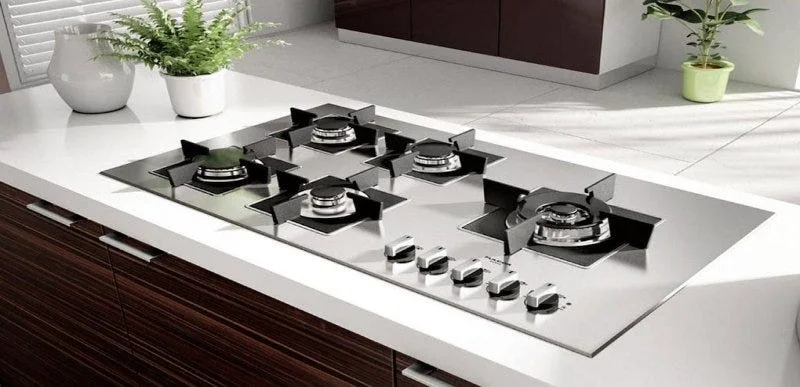
In addition to precise temperature control, gas cooktops provide even heat distribution across the entire cooking surface. This means that food will cook evenly and consistently, resulting in perfectly cooked dishes every time. The open flame produced by gas burners also helps distribute heat more evenly than electric coils or smooth-top surfaces.
Another major advantage of gas cooktops is their versatility. With multiple burners of varying sizes and intensities, chefs have the ability to multitask and prepare multiple dishes at once. This is especially useful in busy restaurant settings where speed and efficiency are crucial.
Additionally, most professional gas cooktops have features such as skillets, woks, and grill plates that allow for even more diverse cooking options. This makes it possible for chefs to create a wide range of menu items all on one stovetop.
Gas Cooktops in a High-Pressure Environment
In a busy kitchen, time is always of the essence. Chefs need to work quickly and efficiently to keep up with orders and maintain quality standards. This is where gas cooktops truly shine. They offer instant heat and precise temperature control, allowing chefs to adjust the flame for each dish without delay. This saves time and ensures that food is cooked evenly and to perfection.
Furthermore, gas cooktops are highly versatile and can handle multiple pots and pans at once. In a high-pressure environment where every second counts, this feature becomes crucial. Chefs can easily juggle different dishes on the cooktop without worrying about any lag in cooking time or compromising on taste.
How do gas burners accommodate larger cookware?
Gas burners are designed in a way that makes it easier and more convenient for chefs to use bigger pots and pans while cooking. In this section, we will explore how exactly gas burners are able to accommodate larger cookware.
Firstly, the shape and size of gas burners play a crucial role in their ability to accommodate larger cookware. Unlike electric stoves with a fixed heating element, gas burners have open flames that can be adjusted according to the pot size or pan being used. This means that even if you use a large stockpot or wok, you can simply adjust the flame size to fit it perfectly on the burner without the risk of overheating or uneven cooking.
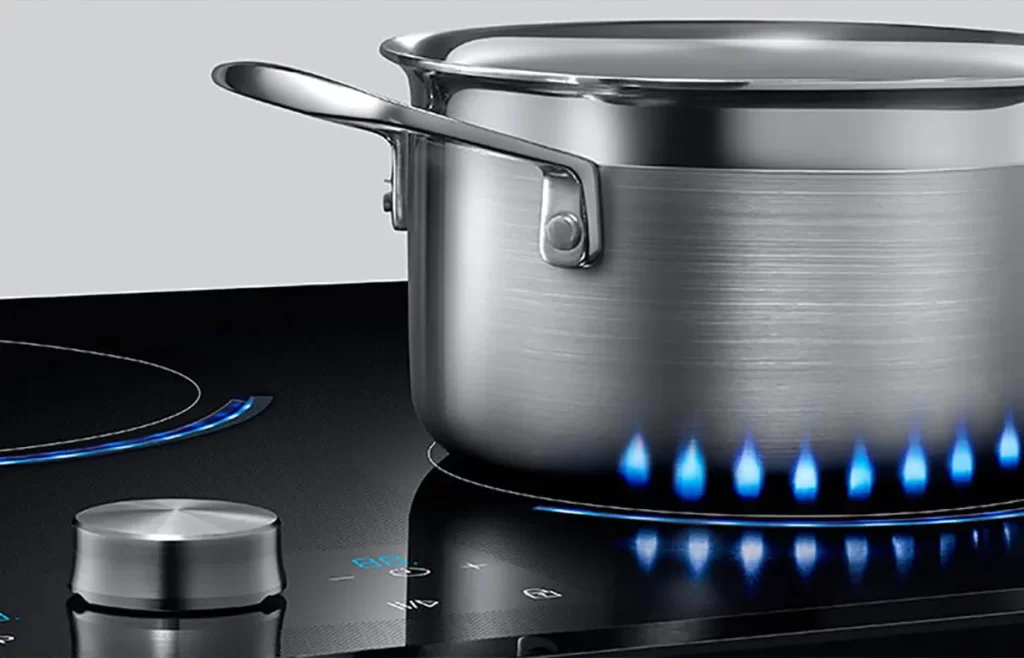
Another important factor is the type of grate used on top of the gas burner. Most modern gas cooktops come with continuous grates that cover all the burners, providing a stable and even surface for larger cookware. These grates are usually made of cast iron or stainless steel and can support heavy pots and pans without tipping over or causing any damage.
Resilience and Durability
Resilience and durability are two crucial factors that chefs consider when choosing a cooktop for their kitchen. And when it comes to these qualities, gas cooktops are the clear winner.
One of the main reasons most chefs prefer gas cooktops is that they are built to last. Unlike electric or induction cooktops with delicate glass or ceramic surfaces, gas cooktops are made of sturdy materials such as stainless steel or enamel-coated cast iron. This makes them less prone to scratches, cracks, or other damages that can affect their performance over time.
Low Maintenance and Simple Repairs
Gas burners, for example, only have a few basic components such as the burner head, igniter, and control valve, making them easier to troubleshoot and repair if necessary.
Moreover, most gas cooktops come with removable parts that can easily be cleaned or replaced if needed. This allows for better maintenance and prolongs the lifespan of the appliance. In contrast, electric cooktops often have fixed elements or coils that cannot be removed for cleaning purposes.
Are There Any Downsides to Gas Cooktops?
While gas cooktops may be a popular choice among chefs and home cooks alike, they also come with their fair share of downsides. In this section, we will explore some of the potential drawbacks of using a gas cooktop.
Safety Concerns:
One of the biggest concerns with gas cooktops is their safety risk. The open flame can potentially lead to accidents if proper precautions are not taken. This includes keeping flammable materials away from the stove, ensuring all burners are turned off when not used, and regularly checking for gas leaks.
Difficulty in Cleaning:
Unlike electric smooth-top or induction cooktops, gas stovetops have grates and burner caps that need to be removed for cleaning. These parts can accumulate grease and food debris over time, making it a time-consuming task to clean them thoroughly.
Uneven Heat Distribution:
Gas cooktops often have uneven heat distribution, which means that certain areas on the pan may receive more heat than others. This can result in unevenly cooked food or even burning in some spots.
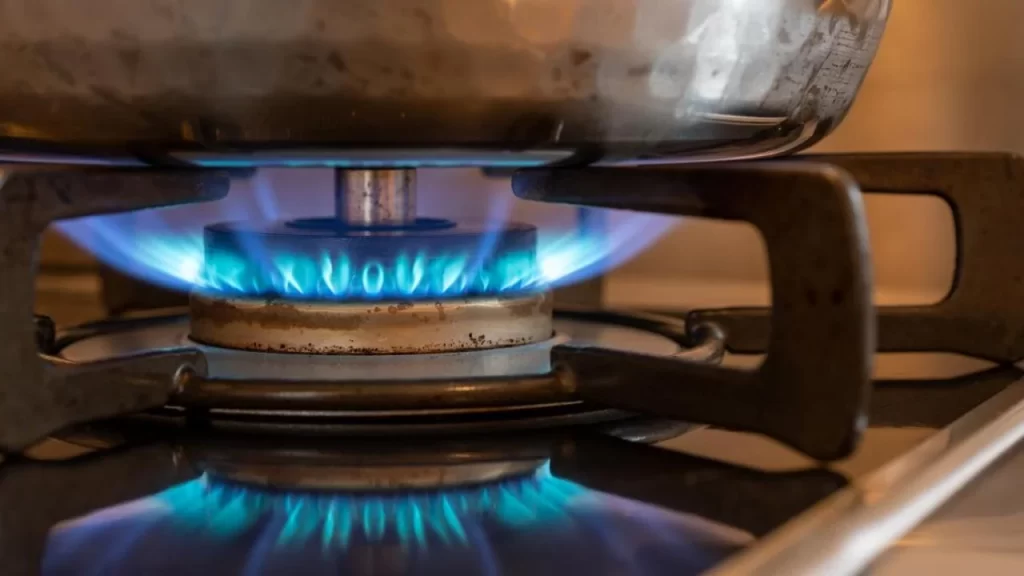
Limited Temperature Control:
While precise temperature control is one of the advantages of gas cooktops, they do have limitations when it comes to low-temperature cooking. Maintaining consistent low heat can be challenging due to the powerful flames produced by gas burners.
Higher Energy Costs:
Gas stovetops require a constant supply of natural gas or propane to operate, which means higher energy costs compared to electric stoves that rely on electricity from the grid.
Carbon Monoxide Emissions:
Gas stoves produce carbon monoxide as a byproduct of combustion, which can be harmful if there is inadequate ventilation in the kitchen area.
Despite these potential downsides, many chefs still prefer using gas cooktops because they believe that the benefits outweigh any disadvantages. Some even argue that these challenges are easily managed with proper safety measures and regular maintenance.
While gas cooktops do have their share of downsides, they remain a top choice for many chefs due to their ease of use, precise temperature control, and ability to cook with an open flame. It ultimately comes down to personal preference and the level of comfort and skill one has in using a gas stove. Proper care and caution can minimize these downsides, making a gas cooktop an excellent addition to any kitchen.
Related Articles:
Troubleshooting 5 Common Gas Cooktop Issues Latest Info 2024
Can You Use A Gas Stove With An Induction Cooktop? 2024
Why Do Gas Stoves Typically Have Multiple Burners? Info 2024
Does A Gas Stove Use Electricity For The Oven? In 2024
Does a gas cooktop need electricity? Complete Info 2024
Conclusion
In conclusion, gas cooktops remain a favorite among professional chefs due to their precision, instant heat control, versatility, and ability to enhance flavors. While there may be some downsides, such as cleaning challenges and safety concerns, the overall benefits make gas cooktops an essential tool in any serious kitchen. Their durability, ease of maintenance, and adaptability to various cooking methods continue to solidify their place as the go-to choice for chefs worldwide.
FAQs
Are gas cooktops better for high-heat cooking?
Gass cooktops excel at high-heat techniques like searing, stir-frying, and flame charring.
Do gas cooktops work with all types of cookware?
Yes, gas cooktops are compatible with all types of cookware, unlike induction cooktops, which require magnetic pots and pans.
Are gas cooktops harder to clean?
Gas cooktops can be more challenging to clean due to grates and burners, but regular maintenance makes it manageable.
Is a gas cooktop environmentally friendly?
Gas cooktops are less energy-efficient and produce more emissions compared to induction cooktops. However, their precision and control often outweigh these concerns for many chefs.

